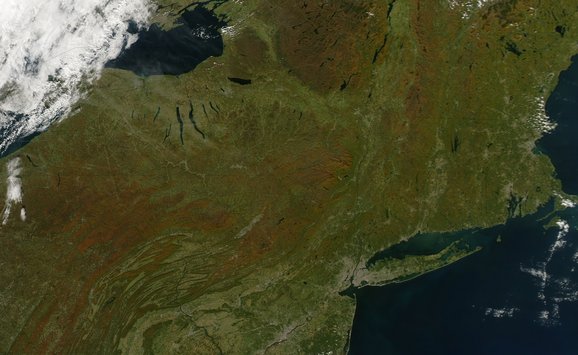Deep sea mining, which a decade or so ago was on regarded as only a little more likely than mining the moon, has within the past few years become a very real possibility. The deep seas cover a variety of potentially valuable mineral resources. But of them all, manganese nodules should prove to be the biggest prize.

Sea water is already the source of much of the tridentine and magnesium produced in the United States today. Gold, platinum, and diamonds, as well as minerals containing tin and iron, are recovered from submerged placer deposits around the world. And oil wells are now drilled from mobile platforms in over 600 feet of water. But none of these operations take place beyond the continental shelf. Manganese nodules, in contrast, lie considerably farther from shore and in deeper water than any mineral resource being recovered today. If they are to prove to be a resource, new techniques and new methods of operation—as well as substantial capital investments—are going to be required.
The manganese nodules form a layer on the floor ea tile ocean. Typically, they are brownish-black, earthy ellipsoids ranging from less than an inch to several inches in length. Although they most commonly occur in 5,000 to 18,000 feet of water, they have also been found in as little as 500 feet of water. Almost every core or dredge sample of the ocean bottom seems to contain at least a few nodules, and in some areas they form an almost cobblestone pavement-like covering of the bottom. Manganese content ranges from about 20 50 percent; the nodules also contain up to 2 percent of Cobalt, 2.5 percent of nickel, and 3 percent copper, as well as smaller amounts of a number of other metals. The vastness of this untapped resource is emphasized by the fact that manganese nodules are forming on the ocean bottom at a rate faster than that at which manganese is being consumed around the world.
But are these manganese-cobalt-nickel-copper deposits really a resource, or are they still part of the "blue sky"? A number of indications suggest that deep sea manganese nodules are moving up the economic ladder to a point where they may soon compete with high-grade ore. Both Japanese and Russian scientific vessels are known to be investigating manganese nodules. In Britain a consortium of firms has been formed to investigate the commercial possibilities of seafloor manganese mining, among other things. In the United States a number of firms have invested funds in research on the geology of the nodules and on possible mining techniques.

Officials of these companies generally agree that the mining of manganese nodules is technologically feasible now, that no important breakthrough is required at any stage of the production process. The most likely mining technique involves pulling the nodules up off the ocean floor in a seawater medium by use of a hydraulic pump, in effect a powerful underwater vacuum cleaner. At smaller scales this technique has proven useful in other deep sea operations. Neither blasting nor raising and lowering of a dredge is necessary. By working with television cameras and mining against the current to avoid the turbidity created, close control of the hydraulic pump can be maintained.
Of course, important problems remain, including the topography and stability of the ocean floor, sediment bearing strength, fouling, and differential currents. The deep sea manganese nodules also present a unique processing problem. Their very fine grain size and intimate mixture of several valuable metals rule out simple concentration methods.
The clouded claim to ownership of deep sea resources is a further deterrent to deep sea mining. It is by no means clear whether or to what extent it is possible to have exclusive rights to a deposit of manganese nodules on the ocean bottom. The Convention on the Continental Shelf grants sovereignty to the coastal nation over the bed of the sea not only out to the 200-meter depth line but also "beyond that limit, to where the depth of the superjacent waters admits of the exploitation of the natural resources of the said areas" Despite this ambiguous wording, most people consider manganese nodules as a common property resource subject to the law of capture. That is, they belong to whomever gets them in his boat first.

John Mero, a scientist and engineer who is without doubt the foremost advocate of the technologic and economic feasibility of deep sea mining, estimates that the cost of mining will vary from $2 per ton of nodules in 3,000 feet of water to $5 per ton in 16,000 feet. He also estimates that the capital necessary to build a rig capable of dredging 5,000 to 10,000 tons per day hydraulically from 13,000 feet is $6 million, an estimate that persons familiar with ship design say is not unreasonable. Finally, he suggests that another $60 million would be needed to design and build a plant for processing the nodules. It appears that the greater part of necessary investment is in surface facilities that are largely unrelated to the depth or location of mining.
Mero's cost estimates have not gone unchallenged. Some consider them wildly optimistic, but there seems to be fair agreement that the appropriate figure for initial capital investment is in the neighborhood of $100 million. Even this figure does not compare unfavorably, given the size of the resource available to one mining ship, with the $50 to $100 million that it has cost to bring new manganese ore deposits into production in South America and Africa. Against these costs, Mero and others have estimated gross returns of $45 to $100 per ton of nodules.

Though there seems no reason to question Mero's estimates of production costs, an important question must be raised about the gross return figures. It is instructive to review the way that these figures must have been determined.
First, the metallic composition of a typical nodule is expressed in terms of pounds per ton; then for each metal therein the number of pounds is multiplied by its current price; and these values are summed to obtain total gross return. For example, a relatively rich nodule from the Pacific might be made up of 35 percent of manganese, 0.5 percent of cobalt, and 2 percent each of nickel and copper. One ton of such nodules contains 700 pounds of manganese, 10 pounds of cobalt, 40 pounds of nickel, and 40 pounds of copper.
We can use for convenience the following rounded prices of the metals (roughly accurate in 1964) : manganese, 4¢ per pound; cobalt, $1.50 per pound; nickel, 70¢ per pound; and copper, 30¢ per pound. Multiplying and summing, we find that gross value of one ton of the nodules is $28 + $15 + $28 + $12, or $83 in total.
By varying the metal content of the typical nodule within the limits commonly found in different parts of the ocean, one can obtain the estimated gross value range of $45 to $100 per ton. With such changes in composition, first one metal and then another looms most important. Despite the predominance of manganese in terms of weight percent, other metals may predominate in value.

But is this an appropriate procedure by which to calculate gross returns? Most important—could current prices be maintained on a world market if a large-scale deep mining operation came into being? Given current consumption, one ship of even 500 short tons per day capacity and producing nodules of 35/½/2/2 composition could have an effect on the cobalt price, and higher scales of output would be likely to have an effect on some other prices as well.
Mero and others have referred to an operation that would produce 50 percent of the US consumption of nickel, over 100 percent of that of cobalt and manganese, and 5 percent of that of copper without noting the implication of such a scale for the gross returns estimate. It is almost as if the prospective miner were trapped by the very richness of his bonanza.

Let us speculate about what gross returns might be if a ship recovering 2,000 to 5,000 tons of 35/½/2/2 nodules per day were put into operation. Manganese prices would certainly fall, say about 50¢ per unit. (At this price several of the large African and South American producers could continue to operate, but Indian mines and most smaller producers would probably be forced out of the market.) Let us also estimate that the cobalt price—certainly the major unknown in this exercise—falls to $1 per pound, that nickel falls to 65¢, and that copper is unaffected. Now the ton of rich ore that formerly grossed $83 grosses less than $64, and annual gross returns decrease as follows:
- If production is 2,000 tons per day, from $50 million to $38 million.
- If production is 5,000 tons per day, from more than $125 million to $96 million.
Of course, these estimates are based on current consumption rates. The price effect of any deep sea venture is bound to diminish over time as consumption rates go up, and to that extent the returns will be higher than those just suggested. On the other hand, one successful venture may attract competitors, which would increase pressure on prices.

In any event, it is clear that the potential profits from mining deep sea metallic nodules, while less than were first predicted, may be large enough to be attractive. Among the metals derived from the nodules, manganese holds a special place, for North America is virtually devoid of high-grade manganese ore deposits. The United States relies on imports for nearly all its manganese—95 percent of which is consumed in making steel. In these circumstances it is unlikely that the ocean floor will remain untapped for long.

Adapted from Low-Grade and Nonconventional Sources of Manganese, by David B. Brooks; to be published this fall by RFF.






